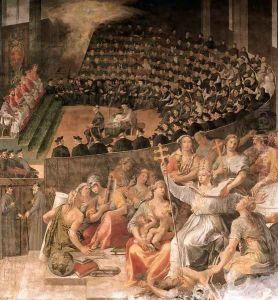Pasquale Cati Da Iesi Paintings
Pasquale Cati da Iesi, born in 1550 in Iesi, a town in the Marche region of Italy, was an Italian painter known for his contributions to the late Renaissance and early Baroque art movements. His work includes a range of religious and secular subjects, characterized by their vivid detail, vibrant colors, and dynamic compositions. Cati's artistic journey began in his hometown, but his talent soon led him to Rome, where he became part of the vibrant artistic community, engaging with contemporary styles and innovations.
In Rome, Cati was exposed to the works of prominent painters of the time, which influenced his development as an artist. He was particularly impacted by the Mannerist style, which is evident in his early works. However, as his style evolved, he began to incorporate elements of the emerging Baroque sensibility, with a greater emphasis on emotion, naturalism, and the use of light and shadow to achieve dramatic effects. Despite not being as widely recognized as some of his contemporaries, Cati's contributions to Italian art have been acknowledged for their quality and for the role they played in the transition between two of the most significant periods in art history.
Cati's oeuvre includes altar pieces, frescoes, and portraits, through which he demonstrated his versatility and skill in handling different mediums and subjects. His work was commissioned by several notable patrons, including churches and members of the aristocracy, which attests to the esteem in which he was held during his lifetime. Pasquale Cati da Iesi's death in 1620 marked the end of an illustrious career that spanned seven decades. While he may not have achieved the lasting fame of some of his peers, his art remains a testament to the rich artistic landscape of Italy during a period of significant transition and innovation.
